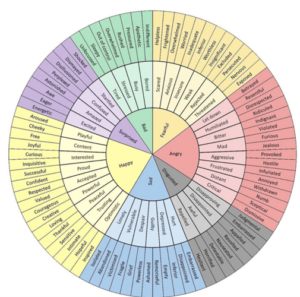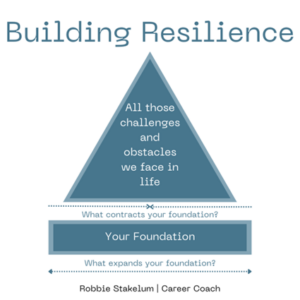Robbie Stakelum is a life coach, trainer and yoga teacher. Do you want to enhance your resilience? Here’s some practical advice on how to do so
Resilience is quickly becoming the in-vogue buzzword of the coaching and wellbeing sector. Where once people were asked ‘have you tried being less stressed’ now people are being asked to ‘be more resilient’. But what does that even mean?
If you scan your workplace or social network, you would likely observe that those close to you, perhaps even yourself, are struggling at the moment. It’s unsurprising with the many global challenges, let alone personal ones, that burnouts are rising, and people are reporting increased levels of poor mental health, anxiety and depression and are losing their motivation and focus. As both a life coach and yoga teacher, I find that many clients lack the skills or tools to cope when confronted by prolonged adversity. So here is a quick rundown on not just what resilience is, and some practical and relatively simple things you can do to boost your resilience.
Resilience? What’s that?
Resilience is not about building immunity to experiencing setbacks or avoiding feelings of anger or stress. Resilience can often be misinterpreted as being ‘strong’ and burying those emotions deep to enable you to keep going and persevere. But it’s quite the opposite.
“Resilience can often be misinterpreted as being ‘strong’”
For me resilience is about experiencing those emotions, sitting with them, processing them and then finding a way to power through. It is the skill set to regain not just your focus but also your motivation. The phrase ‘bouncing back’ gets tangled with resilience, but when working with clients I prefer ‘bouncing forward’, because resilience isn’t about returning to the status quo, clearly something has not worked, instead it’s about making a positive change.
There are many ways to improve your resilience but for me the most important are i) taking stock of your situation, ii) identifying and managing your emotions and iii) managing your energy levels. Below I provide some practical tools I use with clients and for myself, but I would caution that there is no silver bullet to improving resilience, it is a practice and takes time to develop.
Taking Stock
Resilience is the capacity to take stock of what is working, to see the positives and be grateful for what you have as a foundation to build from. But it doesn’t mean you’re always positive and upbeat, but taking stock provides a starting point to pick yourself up from. Here are some simple and practical exercises to help take stock:
“Resilience is the capacity to take stock of what is working, to see the positives and be grateful for what you have”
Ask 3 people in your life, preferably a colleague, a friend and a family member, who see the different roles you play in life to describe you using 3 words. Clients always find this an empowering exercise because it reminds them of their strengths or opens a new way of seeing themselves or their situation.
Practice Journalling. I journal almost every day, and I always start with three things I’m grateful for and three actions I’m going to take on that day. This activity helps to feel gratitude which creates a positive mindset to start your day from and listing three actions, which can be very small, gives you back a sense of control and empowerment, while also giving you a motivational boost when they’re completed.
Feeding forward. In this activity you write out three things that you are doing well now, and then write out one thing that you would like to improve. This activity is helpful to find the positives, even in the challenging situation you face, while also being practical about what needs to be done differently.
Managing Emotions
Resilience requires emotional intelligence, to be self-aware of what you are feeling, and why. Emotions represent unmet needs. You must understand what you’re experiencing in order to identify your needs to push through.
“You must understand what you’re experiencing in order to identify your needs to push through”
Here are some simple and practical tools that can help boost your emotional intelligence.
Journalling. If you have a journaling practice, start with ‘Today I am feeling (insert emotion here). But you cannot use ‘good’ or ‘bad’. You must use emotions, not adjectives. The emotions circle below can help improve your emotional literacy.
When emotions feel overwhelming, you can write out the following breakdown.
-
- Today I am feeling stressed.
- Today I am experiencing stress.
- Today a part of me is experiencing stress.
This may seem quite simple, but it helps to distance the emotion from you. You don’t need to identify with the emotion, it is not who you are, but rather it is something you are experiencing, temporarily.
Put pen to paper and write out your express needs. When you think about what emotions you are experiencing such as anger, stress, sadness…, write out what you need, what would help improve how you are feeling, but remember to focus on actions you can take. Emotions are typically linked to unmet needs; for example, anger is often associated with not being heard or respected while anxiety is often linked to the need for certainty and confirmation. Identifying the correct needs helps to select the right course of action.
Managing Your Energy
Resilience is also tied to your energy levels, when you’re tired and run down you feel things more intensely than you normally would. You need to ensure that you’re looking after yourself. You need reserves in the tank to be able to persevere through those challenges.
There are many things we can do to improve our energy level. Here are some simple steps:
Journaling (again?!). Yes, when I journal, I rate my energy level on a scale of 1-4. I also mark on a scale of 1-5 my diet, exercise, sleep, and water intake. All these things are connected, in time you may notice your energy level is linked to poor diet choice which impacts on your sleep cycle, or a lack of exercise or fresh air. You need a holistic approach to manage your energy better, and it is rarely ever just a single factor.
Building your base. There will always be challenges that will come at you in life, sadly there is no way to avoid that.
-
- I’d suggest drawing out the graphic below.
- In the triangle write out the challenges you face right now.
- In the rectangular base write out all the things you can do to strengthen your base, this includes all the ways of looking after yourself.
- Outside of the base, write out all the things you do that contract your base, the things that often negatively impact your wellbeing and contract that base.
Then make conscious decisions to choose the activities that improve your mental health and wellbeing. Or when you feel your resilience is waning, those activities captured inside the base can be a great starting point.
Remember we all have setbacks, and our capacity to persevere ebbs and flows, but taking some practical steps can improve your resilience and help regain your momentum and motivation. My suggestions may seem simple, but as a coach of mine used to say, ‘the easy things to do, are also the easiest things not to do’ and only when we reach a crisis point do we realize the impact of not caring for ourselves more routinely.
Want to work with Robbie? You can find out more about his coaching practice, set up a free discovery call or find out if coaching is for you by checking out www.robbiestakelum.com or get in touch direct with Robbie by email via robbie@robbiestakelum.com









